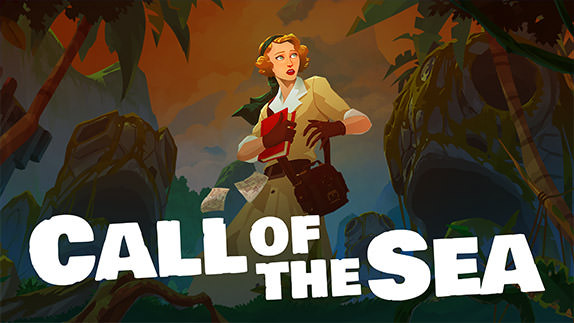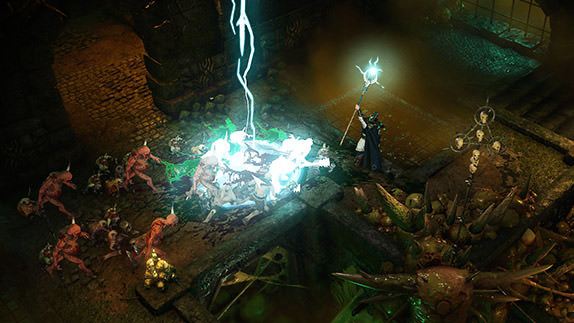Army of Two: The Devil's Cartel Review
 By Marcus Jones
Posted on April 8, 2013
By Marcus Jones
Posted on April 8, 2013
The “bromance” is not quite back in Army of Two: The Devil’s Cartel, but it’s a nice fit into the cooperative market where recent titles have been lacking. That’s not to say that AoT:TDC is by any means a deep game overflowing with important ideals and messages, but it fills a gap that many miss – that couch-based cooperative experience with a friend that gives them true understanding of teamwork. Set a few years after Army of Two: The 40th Day, The Devil’s Cartel throws players into the midst of an all-out war with members of La Guadaña, a ruthless cartel essentially controlling Mexico. Not necessarily the deepest or most thought provoking narrative, but it serves the purpose for setting the stage at least. It’s an obvious “here’s the setup, here’s the twist, here’s the end” that doesn’t take much to guess, but it’s at least a fun, gun-blazing romp for those interested.
Many players familiar with the franchise will remember the original protagonists, Tyson Rios and Elliot Salem, and will be glad to know they do appear in the game. However, the protagonists the players spend their time as are Alpha and Bravo, two newer agents with the T.W.O organization. EA and Visceral have left their true names out of the equation in an effort to allow players to more easily slip behind the mask and “become” them. While this can be achieved with some of the new implementations like customizable masks and outfits, it’s still tough to do when their personalities and dialogue are set in stone. Alpha is a by-the-books type, following orders to strict detail, whereas Bravo is the brash and emotional type ready to leap down someone’s throat. Sounds awfully familiar, doesn’t it?
Another item Visceral has reworked along the same vein of the characters is their cooperative actions, IE: no more rock-paper-scissors and other goofy moves. It’s not an integral part of the game itself, but it helped create the “bromantic” atmosphere that fueled the first two games and helped players connect a bit more and celebrate (or punish) each other’s actions. Visceral has made comments about this, making room for a more polished and action-oriented cooperative experience. Honestly though, what’s more cooperative than two dudes rocking out and playing air-guitar on a shotgun?
Speaking of the characters though, it’s important to note that if anyone is planning on tackling the game solo, there will be no choice in characters. Unlike the last two games, single-player will only offer the ability to play as Alpha. While this seems insignificant for some, it can be a potential deal breaker for others. Players become attached to their characters, to the people they walk behind for many miles and take bullets with, and by eliminating the ability to choose who you play as, players are forced on a role they may not agree with. Also, any customization that is done will directly reflect on Alpha, but in the cooperative will mode, it will transfer over to Bravo as well.
Using the fantastic Frostbite 2 Engine players have experienced in other EA titles, it gave them the ability to take the game in some new directions. Primarily a cover based game, Army of Two: The Devil’s Cartel’s new cover system is completely destructible, literally keeping players on their toes to move and dance around firefights by creating a dynamic landscape. Concentrate enough firepower onto enemy cover and they will do the same, though this can create some strange behavior from the enemy AI In some instances, players can expect to see an enemy or two run past them, even under a barrage of gunfire, seeking out new cover behind your position. It’s really bizarre to see them run past in the middle of everything and they don’t always go down immediately, especially on the harder difficulties. The update to the cover system is perhaps the best mechanic in the game, but without some of the “bromance“ flair that made AoT what it was, the game feels like a somewhat generic shooter in many ways.
Gunplay in the game is incredibly similar to the past titles, with very little changes overall. AoT:TDC lets players move seamlessly between cover, highlighting the next location with their mask’s HUD and then simply pressing a button to climb over and slid into the next bit. There are even moveable covers in this one! A neat subtraction from this game is the loss of the Aggro Meter, but with the inclusion of the new Overkill Mode it balances out. Before, players were privy to seeing who pulled the most heat from the enemies by pissing them off enough to turn their attention away from their partner. Visceral decided this outdated display piece was no longer necessary.
The Overkill Mode is the real beauty here though – unlike before where it was triggerable when reaching a certain level of aggro, players rack up points from killing enemies with headshots, flanking, being a decoy or bait, etc. Once enough points are gathered, players can unleash their Overkill, sending both players into a frenzy. Shots decimate enemies, literally pulping them and sending bits and pieces scattering around (as well as the environment and cover). While one Overkill can be short, players in co-op mode are able to unleash it simultaneously, creating a Double Overkill mode that slows time and allows players to effectively decimate anything on screen. The overhaul to the Overkill mode is fun, but with the body parts piling up it can be a turnoff to anyone with an aversion to an oversaturation of violence.
The new engine has provided a nice visual overhaul in many of the game’s aspects. Graphically, the game is superior to the others, but the characters models for both Rios and Salem just look completely off, and in the case of Rios – ugly as sin. His caveman brow combined with his under bite makes me wish his face stayed under his mask, but adding in his Hulk Hogan-esque voice and it’s a comical caricature of a person. Beyond that though the linear environments, while straightforward and in many cases narrow, are fun to walk through and gawk at. These graphics are not necessarily on the same level as Battlefield 3, but that doesn’t stop Mexico and its inhabitants from standing out within the game in this fantastical land. On a serious note though – the sheer number of people in this cartel would put half of the population of Mexico in league with them based on how many people end up dying.
Simply Put
As a note – this game does not have competitive multiplayer like the others. While this did free up Visceral to spend more time creating a polished and fast-paced cooperative experience, the game still experiences a number of issues. AI can be goofy at times; enemies can disappear leaving only guns and other minor things. The minor bugs serve as major detractors in such a small and focused game, but I didn’t come across anything game breaking. Combining these with a lackluster story that felt like a rehashed Hollywood blockbuster and I would say that Army of Two: The Devil’s Cartel is a fun game to romp through with a friend, but I highly doubt it’ll be on the top of anyone’s list.
Note: Army of Two: The Devil's Cartel was reviewed on Xbox 360. A physical copy of the game was provided by the publisher/developer.




